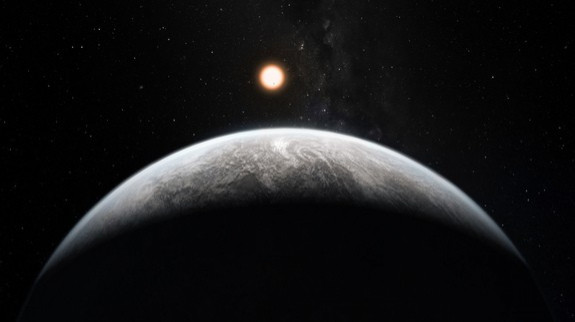Super-Earth Has Scientists Asking, Could Life Exist on Another Planet?

The odds of a planet other than Earth being able to support life are vanishingly small, but astronomers believe a super-Earth just outside our solar system may be hospitable to life.
The newly discovered planet orbits a star about 35 light-years from Earth in the constellation Vela, and a team of European astronomers who discovered it believe there is a slim possibility that it occupies the Goldilocks zone, a term used to refer to planets that are neither too hot nor too cold to support liquid water. Study author Lisa Kaltenegger, an astronomer with the Max Planck Institute in Germany, said that if we are really, really lucky, this planet could be a habitat comparable to Earth.
It's going to be really muggy, just think about the muggiest (Washington) day you can think of, said Kaltenegger. We're not saying it's habitable for you and me.
The new planet, called HD85512b, is designated a super-Earth because it is 3.6 times the mass of Earth (super-Earths must be between one and ten times the mass of Earth to qualify). The planet is closer to its star than the Earth is to our sun, completing a full orbit every 60 days, but its star is about 1,800 degrees cooler than our sun. For it to support life it would need to be rocky, instead of being gas-based like Jupiter, and would need enough cloud cover from its atmosphere to keep the surface cool.
Scientists made the discovery by using a telescope located at the European Southern Observatory called HARPS, which is located in Chile. The new planet appeared over a thousand times during 200 nights of observation, study author Francesco Pepe, of the Geneva Observatory in Switzerland, told ABC.
In addition to the potential Goldilocks planet, astronomers deduced the existence of 50 other planets by noticing a slight wobble in stars that indicated an orbiting planet's gravitational pull. Sixteen of those planets appeared to be composed of rocks rather than gas.
We are building up a target list of super-Earths in the habitable zone, said Kaltenegger.
Astronomers discovered the first possible Goldilocks planet in 2007, using the same telescope. They dubbed that object Gliese 581d.
© Copyright IBTimes 2024. All rights reserved.





















